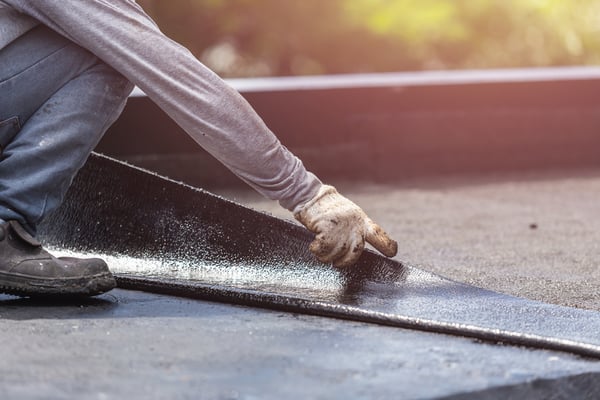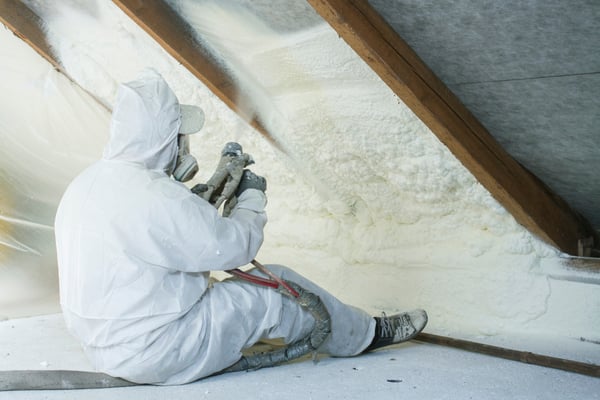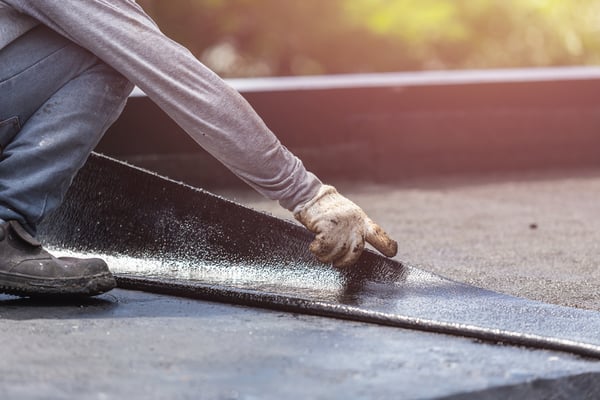Roof insulation methods are divided into three categories: rigid board, non-rigid board, and sprayed polyurethane foam. Rigid boards are commonly used in low-slope assemblies, and some common insulation materials are polyisocyanurate, extruded polystyrene, and mineral wool. Non-rigid insulation is primarily used for attics and pre-engineered buildings.
In New York City, all new roofs and additions to existing roofs are subject to Local Laws 92 and 94. These laws require a sustainable roofing system, which can be a green roof or solar panels.
Cover plates
Cover boards are thin layers of insulation such as wood fiber board, perlite, dense polyisocyanurate, and fiberglass plaster. Cover plates are placed over primary thermal insulation to improve its physical properties:
- Better fire resistance
- Compressive strength
- Pedestrian traffic protection on the roof
- Preventing blisters and shrinkage
- Wind uplift resistance
- Improved compatibility.
Cover plates are also used in renovations to improve the application surface. They cover the joints between insulation boards and provide a layer of separation between existing and new roof membranes.
Rigid insulation boards
Rigid insulation boards, also known as board insulation, provide sufficient compressive strength to support the roof membrane and its loads. In addition to providing support for the roof membrane, rigid insulation also provides a uniform surface for applying the membrane and greater hail resistance. Here is a list of the common types of rigid insulation boards available:
Perlite: A low R-value open-cell insulation used as cover board, which offers good fire resistance but loses compressive strength when exposed to water. 1/2" boards have a higher percentage of organic material compared to thicker boards. When using hot asphalt it can cause blisters and for this reason perlite is generally not recommended.
Polyisocyanurate: A high R-value plastic foam insulation used on low-slope roofs. It has greater fire resistance compared to polystyrene, but this should be checked with the manufacturers if a thermal barrier is required. Polyisocyanurate insulation always comes with facers, thin sheets on both sides, as they are necessary in the production process. When subjected to heavy traffic, foam insulation can compress and facers can delaminate. Polyisocyanurate will absorb moisture when exposed to leaks. This causes the insulation to lose its R-value, requiring replacement, unlike polystyrene which can be reused. Note that polyisocyanurate is cheaper than extruded polystyrene.

Composite boards: Composite boards are made from two layers of different types of insulation, which are laminated together at the factory. The main insulation is usually polyisocyanurate or EPS; and the second layer can be perlite, plywood, wood fiber board or plasterboard. Typically, the secondary layer will be the top surface of the board. Having a strong mechanical bond between both layers is crucial, otherwise the secondary layer may fall off.
Polystyrene: There are two types of polystyrene insulation, expanded polystyrene (EPS) and extruded polystyrene (XPS), each with unique properties. Polystyrene is a type of plastic foam, so it should be used with caution in situations where hot roofing materials are used.
- Expanded Polystyrene (EPS) : EPS is sometimes called beadboard or molded expanded polystyrene and is a low-density product with a moderate R-value. EPS does not offer high resistance to water vapor and will disintegrate when exposed to solvent-based adhesives and hot asphalt. If any of these materials are used, a cover plate must be installed over the insulation. Unlike other plastic foam insulation, EPS does not thermally age because its cells are filled with air.
- Extruded Polystyrene (XPS) : Extruded polystyrene has a high R-value and good resistance to water vapor. However, like EPS, it should not be exposed to hot asphalt, solvents or extremely high temperatures. Compared to polyisocyanurate, XPS offers the possibility of reuse as it does not absorb water. XPS insulation also has a lower life cycle cost than polyisocyanurate insulation.
Blanket, batt and blown insulation
This insulation is commonly used for attics and roofs of pre-engineered metal buildings. Batt insulation is factory cut into standard lengths and packaged without rolling, while batt insulation comes in rolls. The most common material for batt and batt insulation is fiberglass, which is also available as a blown product. Other materials include mineral wool, which has greater compressive strength than fiberglass; and recycled newsprint cellulose, which is available for blown-in insulation and can be treated to resist fire and mold.

Sprayed polyurethane foam insulation
Sprayed polyurethane foam (SPF) insulation systems are two-component, self-adhesive materials. They are applied directly to roofing and can serve as insulation and an air barrier when applied to the underside. SPF insulation is available in closed-cell or open-cell versions, with different levels of vapor permeability. Can be used alone or as a primary coating in protective coating combinations.

